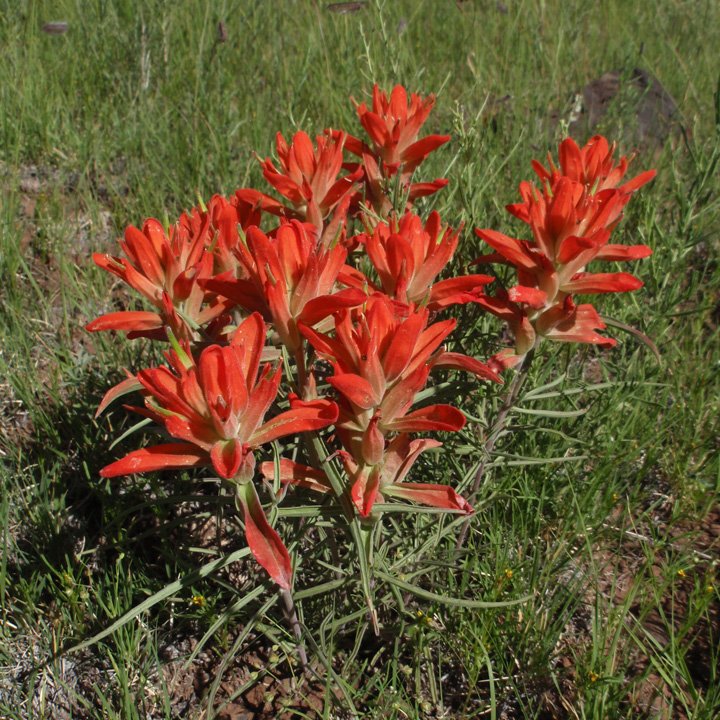The Genus Castilleja
Family: Orobanchaceae
There are 225 species of Castilleja—annual and perennial, mostly herbaceous plants (a few become shrubs) native to the west of the Americas from Alaska south to the Andes, northern Asia, and one species as far west as the Kola Peninsula in northwestern Russia. The genus is very prevalent in the southwestern United States: in Arizona there are 16 species of Castilleja, in California there are 36 species, Nevada has 20 species, New Mexico has 21 species, Texas has 09 species, Utah has 15 species.
They are hemiparasitic on the roots of grasses and forbs. They are rarely found in containers in the nursery trade unless they are grown on other species of plants. Most often you can find them as seed that you’ll plant where they are likely to find a host.
The generic name honors Spanish botanist Domingo Castillejo.
Commonly called “painbrushes” these species have specialized roots known as haustoria roots that attach to the roots of a host plant, thereby providing additional water uptake for the paintbrush plant and possibly some organic and inorganic nutrients. The relationship does not kill the host. Seeds do not require a signal from the host to initiate germination like some hemiparasitic plants, and they contain endosperm that provides enough energy for the seedling to establish independently. Unless a haustorium root becomes attached to a host root, however, they will decline in vigor, remain stunted in growth, and never flower, or they will eventually die.
When setting out seed for this species, located in a sunny location where other forbs and grasses are growing. You can plant seed in fall or early spring. Keep the soil where the seed is wet—as with any native species, wet years are when plants recruit. So mimic the wet years by keeping the soil wet, and as plants grow, you can ween them away from regular water. But watering occasionally will keep established plants happier. Most castilleja species appreciate good drainage. Most species are pretty cold hardy.
Many insects and hummingbirds pollinate these plants. Castilleja species host numerous butterfly and moth larva including these likely candidates:
Anicia checkerspot (Euphydryas anicia ssp. hermosa)
Theona Checkerspot (Chlosyne theona)
Black Checkerspot (Chlosyne cyneas)
Fulvia Checkerspot (Chlosyne fulvia)
Castilleja species are mostly edible and have been used as food by many people, however some caution should be applied as many species can absorb a toxic level of selenium from the soil (and from their host plants). Plants are used for numerous medicinal purposes, internally and externally.
Purple owl's clover (Castilleja exserta) is an annual plant, and one of the more common species, especially in the lower elevations. It is often found in wildflower blends. Photo by Max Licher, SEINET
Wholeleaf indian paintbrush (Castilleja integra). Found on dry rocky slopes from 4,500-10,500 ft. Photo by Sue Carnahan, SEINET
Woolly Indian Paintbrush, (Castilleja lanata). Found on dry slopes, often with granitic or limestone substrates; 2,500-7,000 ft. Unusually woolly! Photo by Michelle W., iNaturalist
Great Red Indian-Paintbrush (Castilleja miniata). Moist meadows, streambanks, montane to subalpine habitats at 5500-12000 ft. Photo by Paul Rothrock, SEINET
Labrador Indian-Paintbrush (Castilleja septentrionalis). Found in meadows, slopes; at 8000-9500 ft. Formerly called Castilleja sulfurea. Photo by Amy Ellwein, iNaturalist






